The Westphalian Horse, a majestic breed esteemed for its versatility and performance, boasts a rich lineage rooted in the heartland of Westphalia, Germany. Having evolved over centuries, this breed reflects the comprehensive art and science of selective equine breeding. Just as captivating as their ancestry are the notable characteristics and traits that Westphalian Horses embody – from their physical attributes to their temperament. Moreover, the Westphalian horse’s prowess in various sports disciplines has been recognized worldwide, showcasing their innate athleticism and intelligence. However, achieving excellence comes with its own challenges, and in the case of Westphalian horses, it involves meticulous breeding, meticulous nurturing, and attentive care to maintain their health and development.
Table of Contents (Horspedia)
History and Origin of the Westphalian Horse
Origins of the Westphalian Horse
The Westphalian horse, one of Europe’s youngest horse breeds, boasts a storied heritage rooted in Westphalia, a region in western Germany. Records of the Westphalian breed go back to the late 18th and early 19th centuries when it was used primarily as a reliable, utilitarian workhorse in the farms and industries of its native region.
The Westphalian horse was meticulously developed from several prominent horse breeds to become a robust all-rounder. These foundational breeds included Hanoverians, Oldenburgs, Thoroughbreds, and Prussian horses, all of which were selected for their unique characteristics that would be advantageous for farming, riding, and carriage purposes.
Over the centuries, various breeding programs helped shape the Westphalian into a breed that combined the strength and endurance of a working horse with the elegance and agility of a fine riding horse. The implementation of selective breeding policies over time allowed for the preservation of the desirable traits within the breed and to ensure it continued thriving.
Development of the Westphalian Horse
In the early 20th century, a turning point came for the Westphalian horse with the establishment of the Westphalian Horse Studbook in Germany in 1904. This registry set standards for the breed and offered legitimacy to the Westphalian horse as a distinct breed, separate from its founding stock.
Following World War II, the Westphalian breed was modified yet again, this time to meet the changing demands of an increasingly industrialized society. The strength and endurance that had once defined the breed were less significant in a world that was shifting towards mechanization.
Recognizing this, breeders began to introduce more Thoroughbred and Anglo-Arabian bloodlines into Westphalian breeding programs. The breed’s heavy-set frame gradually became lighter and more agile, making them better suited for sport and riding. Today’s Westphalian horse is known for its athletic prowess, grace, and its adaptability across a range of equestrian disciplines.
The Present-day Status and Role of the Westphalian Horse
Currently, the Westphalian horse breed is experiencing a resurgence, with the breed population now numbering in the tens of thousands. High-profile breeding centers, such as Germany’s Warendorf State Stud, play crucial roles in the contemporary development and preservation of the Westphalian horse. These programs are anchored in the objective of safeguarding and emphasizing the distinct traits that set this breed apart.
Present-day Westphalian horses are bred for a variety of purposes, including both competitive and casual riding. Their adaptability, friendly disposition, and eagerness to please have made them a popular choice for disciplines like dressage, show jumping, and eventing. Furthermore, their serene nature and amenability make them well-suited to roles as therapeutic animals.
The transformation of the Westphalian horse from a rural draft animal to a versatile, performance-focused sport horse illustrates the transformative power of intentional, genetically-conscious breeding. This careful and purposeful approach to breeding has resulted in a horse that impressively combines strength, athleticism, and a pleasing nature, making it a highly attractive choice for various equestrian interests.
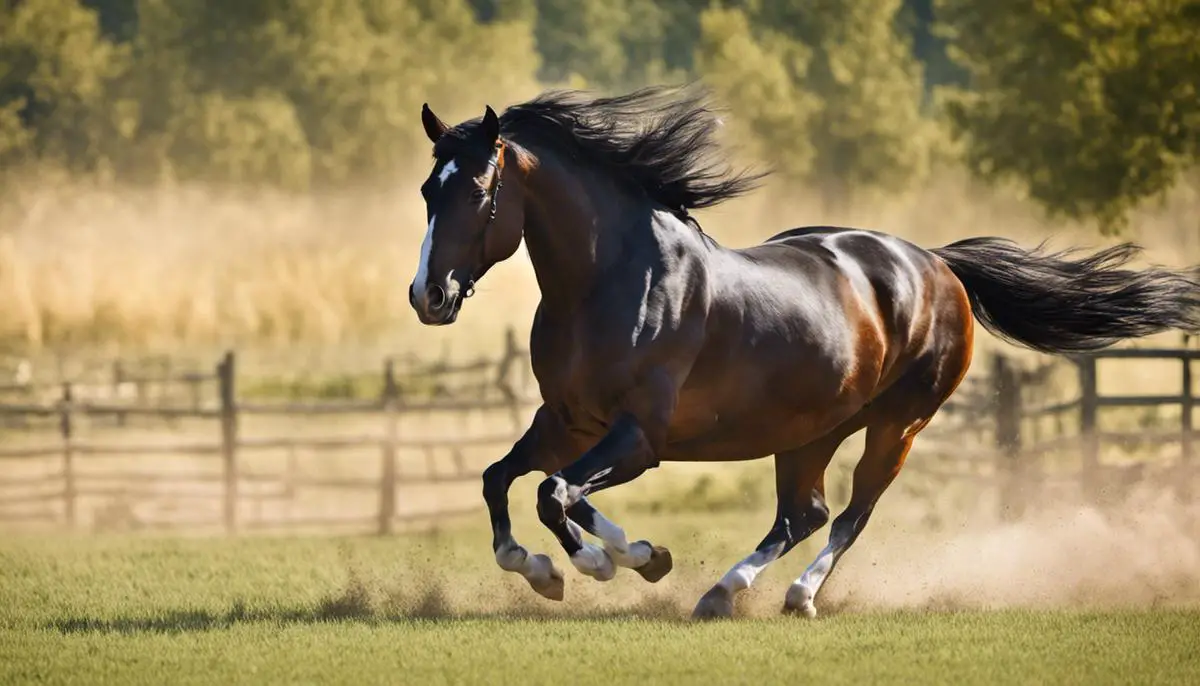
Characteristics and Traits of the Westphalian Horse
Characteristics of the Westphalian Horse
Known as the Westfalen in its native Germany, the Westphalian horse is renowned for its muscular, athletic physique. Standing between 15.2 and 17.2 hands high on average, the Westphalian resembles other popular sport horse breeds in size. Depending on an individual horse’s diet, activity level, and genetic factors, the breed’s weight ranges from approximately 1,000 to 1,200 pounds.
With a well-proportioned head featuring large, expressive eyes and delicate ears, along with a long neck, the Westphalian horse possesses an aesthetically pleasing profile. The long neck complements the deep chest and gently sloping shoulders to give the horse a harmonious and strong silhouette. Its robust hindquarter and solid legs with distinct joints afford it great strength and agility for high-demand activities such as dressage and show jumping.
Predominantly found in solid shades such as black, chestnut, bay and gray, Westphalian horses align with the general color patterns seen in most warmblood breeds. The breed’s glossy coat, which demonstrates considerable resilience against the elements, makes these horses an ideal choice for various outdoor equestrian activities.
Temperamental Attributes of the Westphalian Horse
When it comes to temperament, Westphalian horses are highly valued for their calm and cooperative nature. They display a degree of intelligence that contributes to them being quick learners, highly trainable and adaptive to various riding disciplines. Their behavior is usually marked by docility, friendliness, and agreeableness, which makes them suitable for both professional and amateur riders.
Despite their apparent cool demeanor, these horses are quite energetic and have a noticeable desire to work. They are famous for their courage, determination, and hard work, making them excellent companions in competitions. Their demeanor, combined with their physical attributes, contributes to their success across multiple equestrian sports.
An Insight into the Unique Westphalian Horse
The Westphalian horse is a notable breed that combines an array of exquisite characteristics – a robust yet graceful appearance, a compliant demeanor, and superior intelligence. What differentiates this breed from others is its adaptability, demonstrating proficiency in diverse departments such as dressage, show jumping, eventing, and harness driving.
Reaping benefits from the rigorous German breeding mechanisms, these horses have undergone strict evaluations and grading exercises focusing on breed enhancement. Only the top-notch individuals are permitted to contribute to the breed’s lineage, engendering a superior quality offspring consistently across generations.
The Westphalian horse, marrying elegance, power, agility, and temperament, offers the perfect amalgamation of attributes cherished by equestrian enthusiasts across different disciplines. This unique concoction of traits truly sets the Westphalian horse on a pedestal among sport horses.
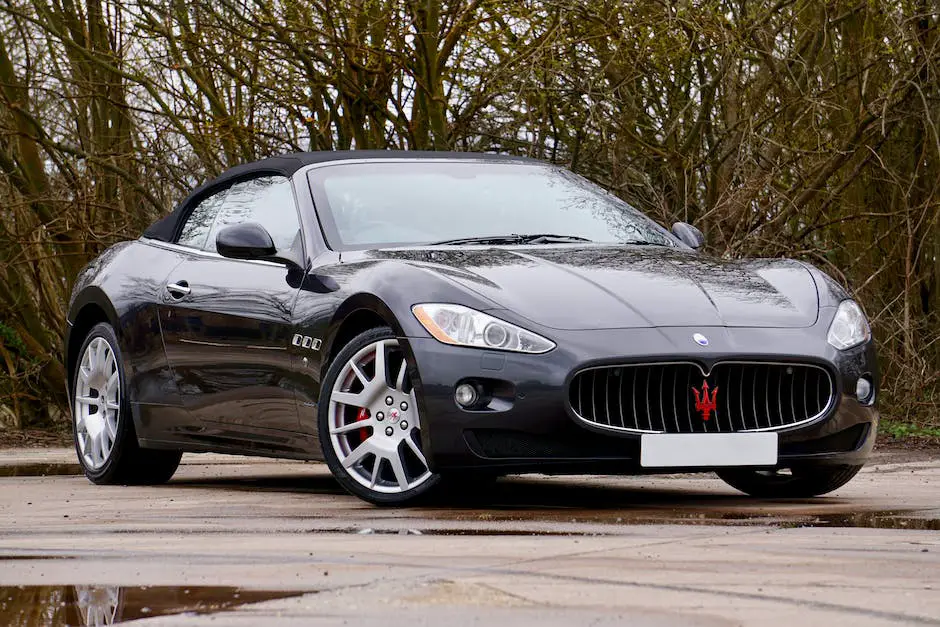
The Westphalian Horse in Dressage and other Sports
The Impression of the Westphalian Horse in Dressage
Dressage, an equestrian sport that exemplifies the symbiosis between a horse and its rider, gloriously showcases the Westphalian horse’s skill set. The breed is notorious for its exceptional aptitude in dressage, marked by an elegant yet strong and nimble movement. Additionally, their calm temperament, obedience, and intelligence enable them to master intricate dressage maneuvers rapidly and execute them with pinpoint accuracy.
Westphalian horses have garnered international acclaim for their success stories in dressage. Some globally recognized dressage horses, such as Farbenfroh and Damon Hill, trace their roots back to Westphalia. Notably, Damon Hill, steered by Germany’s Helen Langehanenberg, bagged silver in both team and individual dressage events at the 2012 London Olympics.
Show Jumping and Eventing: The Trace of Westphalian Horses
In addition to dressage, the Westphalian Horse is also accomplished in show jumping and eventing, thanks to their athleticism and agility. These horses, known for their strong hindquarters, natural jumping style, and fast responses, excel at clearing obstacles and managing the multifaceted challenges of eventing. One notable Westphalian showjumper is Cento, a Westphalian stallion ridden by Otto Becker of Germany, who won team gold and individual silver medals in the 2000 Sydney Olympics.
Eventing, an equestrian event where a single horse and rider combine to compete against other combinations across the three disciplines of dressage, cross-country, and show jumping, also has seen substantial contributions from the Westphalian breed. The strength, courage, and stamina of Westphalian Horses play a major role in their success in this demanding and hard-hitting sport.
Celebrated Westphalian Horses and their Commendable Achievements
There are numerous Westphalian Horses that have undeniably made their mark in the world of equestrian sports. This includes the commendable Ahlerich, ridden by Dr. Reiner Klimke, that claimed an individual gold trophy in the discipline of dressage during the 1984 Los Angeles Olympics. Another notable Westphalian, Deister, achieved recognition in show jumping alongside rider Paul Schockemöhle. This remarkable duo secured victories in the Show Jumping World Cup Final for a remarkable three consecutive years (1982 through ’84).
The Westphalian Horse has continued to make its presence felt in various equestrian sports such as dressage, show jumping, and eventing. These horses are highly esteemed due to their noble aesthetic, competitive drive, and flexible athletic prowess. The significant contributions of this breed to competitive equestrian sports across the globe have cemented their stature as a top-tier performance horse breed.
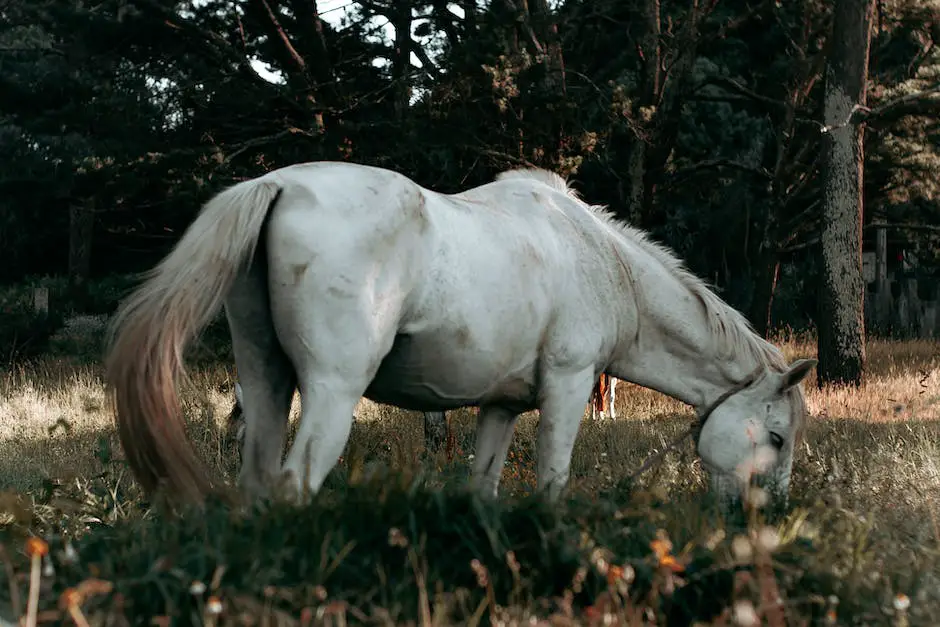
Breeding and Raising Westphalian Horses
The Breeding Process of Westphalian Horses
In the realm of competitive equestrian sports, Westphalian horses have established a reputation as exceptional athletes. The breeding process for these horses originated back in the 1800s in Germany’s North Rhine-Westphalia region. It has since revolved around meticulous selective methods designed to preserve and enhance their distinct traits. The Westfälisches Pferdestammbuch e.V, or Westphalian Studbook, is responsible for supervising the breeding program to ensure the genetic purity, overall health, and athletic abilities of the breed. Stringent requirements are set, and detailed registries are kept for stallions, mares, and foals.
The breeding of Westphalian horses typically commences in the Spring, starting with the selection and pairing of carefully chosen stallions and mares. The Westphalian breed emphasizes the use of pedigree-approved stallions and enforces thorough health examinations before breeding. Following conception, the mare undergoes an approximately 11-month gestation period. Throughout this time, mares are supplied with high-grade feeds and veterinarian care to maintain their health, readiness, and safety for the impending foaling process.
Care Required for Westphalian Foals
The care of a Westphalian foal begins immediately after birth, with owners ensuring the newborn can stand and nurse from its mother. Routine vaccinations and deworming are essential parts of foal care, ensuring the young horse’s health. It’s also crucial to handle foals from a young age to help them be accustomed to human contact, leading to better training outcomes in the future.
The foal’s diet is another important aspect of care. It consists primarily of its mother’s milk for the first few months; then, quality hay, fresh water, and grain supplements are gradually introduced.
Growth and Development Milestones
Westphalian foals exhibit certain milestones as they grow and develop. They typically start shedding their foal hair and replacing it with permanent hair at around six months old. Growth spurts are common between 8 and 18 months, and during this time, a balanced diet and regular exercise are crucial for their proper bone development.
The ages of 2 and 3 are considered major mile markers as the young horses slowly transition to adult diets and training regimens. They begin their formal training, which includes under-saddle work around age 3. Constant assessment of their physical and mental growth throughout this period is important.
Facility Requirements and Raising Westphalian Horses
The process of raising Westphalian horses requires a facility with enough space for the horses to move and exercise freely. Large, well-fenced pastures are ideal for their growth, along with clean, safe stables for shelter. The facilities should also have dedicated areas for foaling and isolation.
Proper nutrition, routine medical care, and regular exercise are key aspects of raising Westphalian horses. The horses are known for their strong character and trainability, making it important for owners to provide them with plenty of mental stimulation. In addition, providing a social environment by raising them with other horses can help in their overall development.
In order to maintain their status as top performers in the equestrian world, Westphalian horses need to be nurtured meticulously. A crucial ingredient in this process is an unwavering commitment to strict breeding procedures and diligent care measures. These standards are maintained under the observance of the Westphalian Studbook, ensuring that these horses are given the appropriate facilities, care, and attention during their developmental stages.
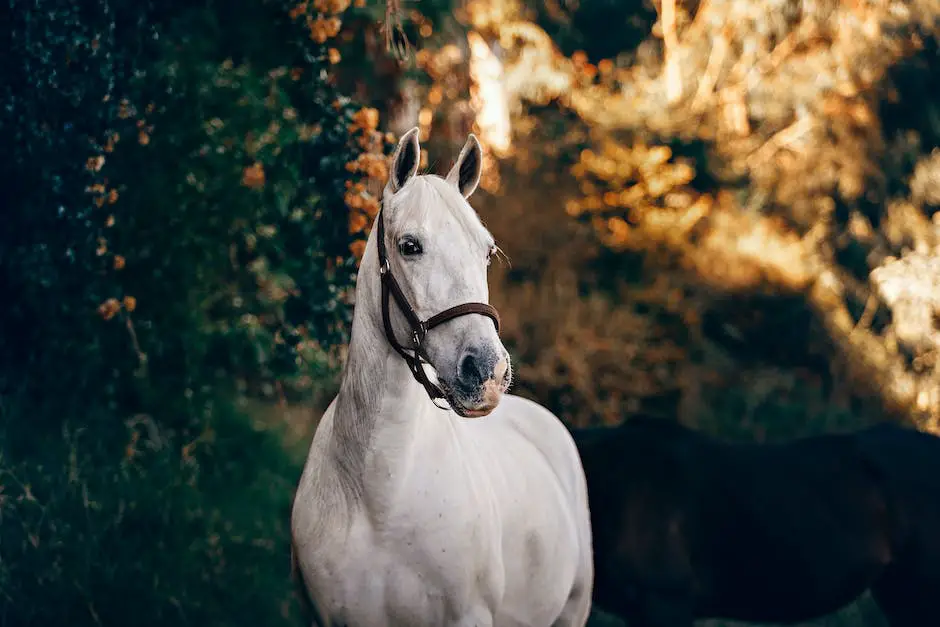
Health and Care of a Westphalian Horse
Understanding and Mitigating Health Risks
Despite their sturdy physique and unflappable disposition, Westphalian horses are not immune to a variety of health issues that affect horses at large. Among these ailments are equine colic, an abdominal disruption and laminitis – a painful, potentially life-threatening foot condition if left untreated. Respiratory and skin diseases also pose a risk.
Breeding practices can sometimes induce genetic diseases in the Westphalian Horse, but breeders have been taking active steps to minimize these risks with the help of careful breeding techniques paired with modern technology.
A regime of preventative measures is the most effective method to handle the risk of these health issues. This preventative care strategy typically includes a carefully balanced diet, regular visits to the vet, consistent observation for behavioral alterations, and habitual grooming routines to detect any unusual skin conditions early.
Dietary Needs of a Westphalian Horse
The Westphalian Horse typically requires a diet consisting of high-quality hay, grass, and concentrates like grains for energy. Given their active nature, a Westphalian may require higher amounts of food than less active breeds.
However, overeating can lead to obesity, which increases the risk of laminitis, so it’s crucial to measure and monitor their food consumption. Access to clean, fresh water at all times is also necessary for hydration and digestive health.
Importance of Exercise
Regular exercise is crucial for a Westphalian Horse to maintain a healthy weight and muscle tone. These horses were bred for work and athleticism, so they thrive on rigorous exercise routines. Daily turnout in a safe, secure pasture allows them to roam, play, and indulge their natural herd behaviors. Structured activities like riding, jumping, or pulling can also help them stay in top shape.
Grooming Requirements
Regular grooming is not only essential for maintaining the Westphalian Horse’s coat and skin but also provides an opportunity to check for abnormalities. Frequent brushing helps to remove dirt, loose hairs, and promotes better circulation. Regular hoof cleaning and care are essential to prevent hoof diseases and laminitis.
Veterinary Care for Westphalian Horses
Routine veterinary care is a significant component of successfully maintaining the health of a Westphalian Horse. Vaccinations, dental care, deworming, and regular health check-ups are fundamental veterinary care aspects. These visits should be done at least annually, though some aspects, like deworming, may require more frequent attention.
Through a high-quality, balanced diet, plenty of exercises, regular grooming routines, and routine veterinary care – a Westphalian Horse can lead a healthy, active, and long life.
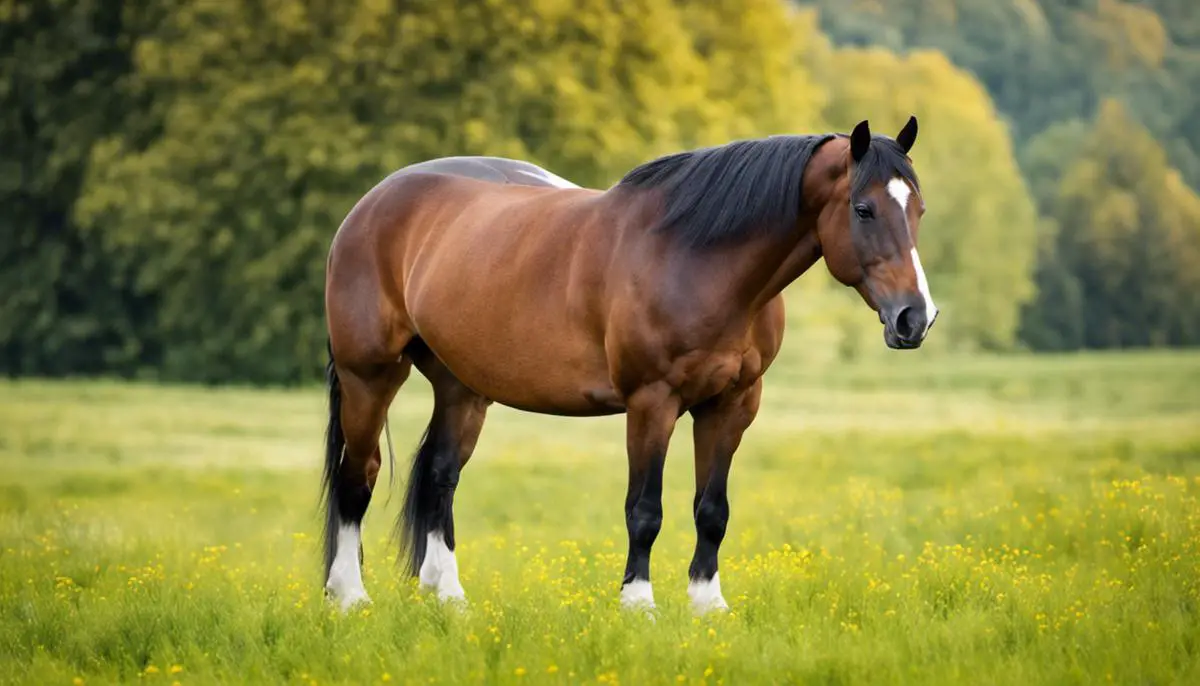
While the journey towards understanding the Westphalian Horse may have started with simple curiosity, it opens up a larger narrative about the complexities of equine care, breeding, and performance. Recognizing this breed’s distinct characteristics and its fitting role in various sports disciplines is a testament to its versatility. Nurturing such horses from their foal years through maturity exemplifies the finesse involved in horse rearing. Furthermore, understanding the major health concerns, dietary needs, and care routines that Westphalian Horses require underscores the constant attention required for maintaining equine health. Ultimately, understanding the awe-inspiring Westphalian Horse is a testament to the heartwarming bond we share with our equine companions, demonstrating that they are, indeed, much more than just a part of our sports activities and hobbies.

